Hollywood Canteen

Brief Synopsis
Cast & Crew
Delmer Daves
Andrews Sisters
Jack Benny
Joe E. Brown
Eddie Cantor
Kitty Carlisle
Film Details
Technical Specs

Synopsis
Slim Green, a corporal stationed in the South Pacific, is enamored of actress Joan Leslie. After he is injured in battle, he and his pal, Sergeant Nolan, are sent to Hollywood, California for rest and recreation before they ship out again. When Slim mentions his desire to see movie stars, he is directed to the Hollywood Canteen, a gathering place for soldiers that is run by motion picture actors and actresses. Slim is impressed when he learns that all the entertainment and food is provided free of cost to servicemen and women. Learning that Slim has a crush on Joan Leslie, canteen president Bette Davis and Jane Wyman arrange for the two to meet. The next day, Nolan finds it hard to believe Slim's account of his experience at the canteen. He accompanies his friend to see things for himself and is impressed by the friendliness of the stars. Slim and Nolan continue their sightseeing the following day and accidentally encounter Joan at the Farmer's Market. That night, Slim becomes the millionth serviceman to come to the canteen and is awarded a luxury hotel suite, a car, a visit to a movie studio and a date with his favorite actress. Slim invites Nolan to share his suite and asks Joan to be his date. When Slim takes Joan home, the two sit in the backyard and talk about their lives. The next day, Slim and Nolan visit the Warner Bros. studio and Slim has dinner with Joan and her parents. Before Slim leaves town to return to the war zone, he makes a speech to the servicemen at the canteen, honoring all branches of the service and all the allies for their part in the fight. Joan has promised to take Slim to the train, but on the way to pick him up, she runs out of gas. When she does not arrive on time, Slim writes her a note, thanking her for a wonderful weekend. At the last minute, Joan arrives at the train station, and kisses Slim goodbye.

Director

Delmer Daves
Cast

Andrews Sisters

Jack Benny

Joe E. Brown

Eddie Cantor

Kitty Carlisle

Jack Carson
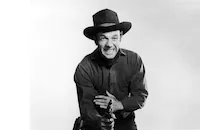
Dane Clark

Joan Crawford

Helmut Dantine

Bette Davis
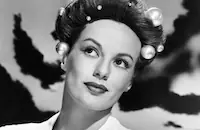
Faye Emerson
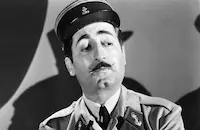
Victor Francen

John Garfield

Sydney Greenstreet

Alan Hale

Paul Henreid

Robert Hutton

Andrea King
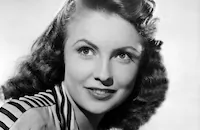
Joan Leslie

Peter Lorre

Ida Lupino

Irene Manning
Nora Martin
Joan Mccracken

Dolores Moran

Dennis Morgan
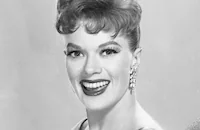
Janis Paige

Eleanor Parker

William Prince

Joyce Reynolds

John Ridgely
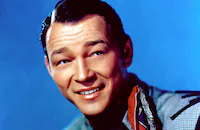
Roy Rogers
Trigger

S. Z. Sakall

Zachary Scott

Alexis Smith

Barbara Stanwyck

Craig Stevens
Joseph Szigeti
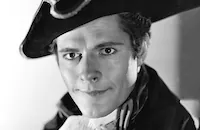
Donald Woods
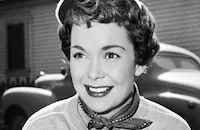
Jane Wyman
Jimmy Dorsey
Carmen Cavallaro
Golden Gate Quartet
Rosario And Antonio
Sons Of The Pioneers
Betty Brodel
Barbara Brown

Jonathan Hale
Eddie Marr

Julie Bishop
Theodore Von Eltz
Chef Milani

Robert Shayne
Mary Gordon
Crew
Harold Adamson
Gerald W. Alexander
Muriel Allen
Milo Anderson
Jean Barry
Julio Blanco
Dick Charles
Benny Cohan
Joe Cramer
Delmer Daves
Paul Detlefsen
Vernon Duke
Mack Elliott
Frank Flanagan
Leo F. Forbstein
Charles David Forrest
Oliver S. Garretson
Martha Giddings
Bert Glennon
Alex Gottlieb
Chuck Hansen
E. Y. Harburg
Ray Heindorf
M. K. Jerome
Helene King
Ted Koehler
Leo Kuter
Burton Lane
Herman Lissauer
Art Lueker
Frank Mccoy
Obdulio Morales
John More
Jim Mundy
Larry Neill
George Nogle
Bob Nolan
Christian Nyby
Florence O'neill
Cole Porter
Leroy Prinz
Casey Roberts
Leon Roberts
Franz Schubert
Fred Sheld
Marion Sunshine
Jack L. Warner
Robert G. Wayne
Perc Westmore
Leah Worth

Photo Collections
Videos
Movie Clip




Trailer
Hosted Intro
Film Details
Technical Specs

Award Nominations
Best Score
Best Song
Best Sound
Articles
Hollywood Canteen
It all started on Broadway, where the American Theatre Wing had opened the Stage Door Canteen to give military men passing through New York on their way to World War II a meal, a chance to meet a stage star, dance with a beautiful woman and mingle with some of the industry's greatest talents. The West Coast division sprang from a suggestion by Warner Bros. star John Garfield. According to Bette Davis in her autobiography, This 'N That, "Just after the start of World War II, in the Green Room, our dining room at Warner Bros., Johnny Garfield sat down at my table during lunch. He had been thinking about the thousands of servicemen who were passing through Hollywood without seeing any movie stars. Garfield said something ought to be done about it. I agreed, and then and there the idea for the Hollywood Canteen was born." Enlisting help from the film industry's 42 unions, Davis supervised the conversion of a former stable into a nightclub that opened October 5, 1942. She also got her agent, Jules Stein, to supervise the Canteen's finances and fundraising.
In addition to getting the studios to sponsor benefits for the organization, he got Warner Bros. to produce the all-star musical Thank Your Lucky Stars (1943), giving their stars the chance to showcase their musical talents (Davis introduced the comedy song "They're Either Too Young or Too Old") and donate their $50,000 salaries to the Canteen. With the success of Stage Door Canteen the same year, a film about the West Coast version was a natural.
Warner's paid $250,000 for the rights to call the film Hollywood Canteen, then turned directing and writing chores over to Delmer Daves, who had written Stage Door Canteen before making his directing debut at Warner's with Destination Tokyo (1943). He crafted a romantic tale of a GI (Robert Hutton) who visits the Hollywood Canteen hoping to meet his favorite star, Joan Leslie (who played herself), leading to a brief wartime romance. The story was just a pretext for a series of musical numbers and star turns, with the stars donating their reduced salaries to the Canteen.
The flimsy storyline sans famous actors was all that might have made it to the screen had the Screen Actors Guild gotten its way. Concerned about plans for other all-star benefit films, the actors union refused to allow its members, particularly those without studio contracts, to accept the reduced salaries Warner's' was offering. They also claimed that Warner's and other studios were using charitable donations to pressure stars into cutting their fees for such films. Their actions brought production to a halt halfway through the shooting and inspired a lawsuit from Warner Bros. They finally settled their differences by agreeing to allow a union committee to decide future cases involving work on benefit films and setting freelance fees at one week's salary at the performer's usual rate. But though the film went back into production, the postponement had kept Warner's from using stars like Hedy Lamarr, who had devoted hours to the Canteen.
One visitor from another studio introduced the film's biggest song hit. Singing cowboy Roy Rogers, supported by his usual back-up group, the Sons of the Pioneers, and the Andrews Sisters, performed "Don't Fence Me In." The song was an uncharacteristic paean to the simple life from sophisticated composer Cole Porter. Actually, Porter had written the song a decade earlier, for Adios, Argentina, a musical at 20th Century-Fox that never got made. Bing Crosby and the Andrews Sisters made the original recording, which went on to top the hit parade for eight weeks. Surprisingly, it was not nominated for a Best Song Oscar®. Hollywood Canteen's nominee in that category was "Sweet Dreams, Sweetheart," by Ted Koehler and M.K. Jerome. It lost to "Swingin' on a Star" from the year's top-grossing film and Best Picture Oscar®-winner, Going My Way. Other musical numbers featured in Hollywood Canteen include "Gettin' Corns for My Country" by The Andrews Sisters, "The General Jumped at Dawn" by the Golden Gate Quartet, and "Tumblin' Tumbleweeds" by the Sons of the Pioneers.
Hollywood Canteen got only mixed reviews, but with its all-star cast and wartime appeal, it couldn't help but win at the box office. With a $4.1 million gross, it was the year's fifth most popular film. Forty percent of its considerable profits went to the Canteen itself. In fact, the Canteen did so well under Davis and Stein's management that it closed at war's end with $500,000 left in the bank. The money was used to create a foundation that continues to fund various projects for the armed forces. As for Bette Davis, she later said, "There are few accomplishments in my life that I am sincerely proud of. The Hollywood Canteen is one of them."
Producer: Alex Gottlieb
Director/Screenplay: Delmer Daves
Cinematography: Bert Glennon
Art Direction: Leo Kuter, Casey Roberts
Music: Ray Heindorf
Cast: Robert Hutton (Slim), Dane Clark (Sergeant), Janis Paige (Angela), Jonathan Hale (Mr. Brodel), As Themselves: Joan Leslie, Andrews Sisters, Jack Benny, Joe E. Brown, Eddie Cantor, Kitty Carlisle, Jack Carson, Joan Crawford, Helmut Dantine, Bette Davis, Faye Emerson, John Garfield, Sydney Greenstreet, Alan Hale, Sr., Paul Henreid, Peter Lorre, Ida Lupino, Joan McCracken, Dennis Morgan, Eleanor Parker, Roy Rogers and Trigger, S.Z. Sakall, Alexis Smith, Zachary Scott, Barbara Stanwyck, Craig Stevens, Jane Wyman, Jimmy Dorsey and his Band, Carmen Caballero and his Orchestra, Sons of the Pioneers, Dorothy Malone, Chef Joseph Milani.
BW-124m. Closed captioning.
by Frank Miller

Hollywood Canteen
Quotes
I've been Reagan-ized!- Jane Wyman
Trivia
Notes
The real Hollywood Canteen was started by John Garfield, Canteen vice-president, and Bette Davis, president. Located on Cahuenga Blvd. near Sunset Blvd. in Hollywood, CA, it opened on October 3, 1942. According to contemporary news items, the film began production in November 1943, but a dispute between Warner Bros. and the Screen Actors Guild caused the production to be temporarily suspended. SAG rules stipulated that each of the actors and actresses be paid full salaries for their appearance in the film, even if that appearance was very brief. Warner Bros. stopped filming on December 22, 1943 and demanded a public apology from the Guild. The studio alleged that the Guild's complaint violated the original studio-guild contract by, among other things, placing players in jeopardy and indirectly running counter to the national wage stabilization program. The Guild responded by stating that the union would "waive application of the rule to such players as voluntarily wish to play in the Warner production, but that it would apply the rule for the protection of any player not wishing to play in the picture or against whom pressure to play might be made on a 'patriotic' basis." When the studio brought suit against the Guild, it responded, "The real issue in this suit is not whether Warner Bros. can make Hollywood Canteen but whether the Guild has the right to enforce rules governing the conduct of its members." By the end of April 1944, the suit was dismissed after an out-of-court agreement in which the Guild agreed that a week's pro-rated salary was a fair minimum for freelance actors who usually work on a "per-picture" basis. Other studios refused to loan their players to Warner Bros. under these terms. A New York Times article dated April 30, 1944 notes that nine similar "all-star" films had been planned by other studios, but were dropped before the agreement was announced. The film resumed shooting in June 1944 using Warner Bros. contract players.
Other Hollywood Reporter news items add the following information about the production: Warner Bros. developed new recording and playback equipment that was used for the first time during the making of this film. The equipment included a new, more accurate cueing device and resulted in less feedback and distortion. Scenes were shot on location at the Veterans Administration Hospital on Sawtelle Blvd., in the Bel-Air Estates, at the Farmer's Market and on the Sunset Strip. Forty percent of the film's gross receipts were to be donated to the Hollywood Canteen. According to modern sources, this film was one of Warner Bros. top money makers of the year. The film received Oscar nominations for Best Sound Recording, Best Scoring of a Musical Picture and Best Song ("Sweet Dreams Sweetheart"). Hollywood Canteen marked the film debut of stage actress Joan McCracken.

















